« The First Thin Place | Home | More Thin Places in Exodus »
Mt. Sinai as a Thin Place
By Mark D. Roberts | Wednesday, May 13, 2009
Part 2 of series: Thin Places
Permalink for this post / Permalink for this series
If a thin place is defined as a place where God’s presence is known with particular immediacy, then there are several stunning thin places in Exodus . . . sort of. As we’ll see, they don’t exactly seem to fit the definition, though they certainly are thin.
Moses and the Burning Bush at the Mountain of God
In Exodus 3, Moses was tending his father-in-law’s flock when he came to “Horeb, the mountain of God” (3:1; Mt. Horeb is more commonly known as Mt. Sinai). “There the angel of the LORD appeared to him in a flame of fire out of a bush; he looked, and the bush was blazing, yet it was not consumed” (v. 3). When Moses started to investigate, the LORD himself called to him and told him not to approach, but to take off his sandals “for the place on which you are standing is holy ground” (v. 5). As Moses stood there, God revealed his purpose (to free the Israelites from their bondage in Egypt) and his name (I AM WHO I AM; I AM; Yahweh; all versions of the Hebrew verb “to be”) (3:7-14).
The Covenant and the Law at the Mountain of God
After the Israelites were delivered from Egypt, they journey into the same wilderness where Moses once encountered God in the burning bush. They camped in front of the mountain of God in what is called “the wilderness of Sinai” (19:2). Moses ascended the mountain, where God spoke to him, initiating the covenant with Israel (19:3-6). On the third day after this encounter, the Lord descended upon the mountain with fire, thunder, lightening, and smoke (19:16-19). Once again, he spoke to Moses, though this time “in thunder” (19:19). The Lord warned the people, through Moses, not to approach the mountain because it was holy (19:23-25). Then, in this context, God spoke the Ten Commandments (20:2-17). The people were afraid of the natural phenomena on the mountain, and kept their distance. Only Moses drew near to God (20:18-21) to receive God’s laws.
One of God’s first instructions to the Israelites was to build for him “an altar of earth” so they might present their offerings upon it (20:24). Then the Lord adds, “in every place where I cause my name to be remembered I will come to you and bless you” (20:24). At this point, the Israelites are not to build only one altar, whether at Mt. Sinai or any other place. Rather, they are to build altars in various places. Moreover, God promises to come to them in these places.
Reflections on Mt. Sinai as a Thin Place
If ever there were a thin place, it would have to be Mt. Sinai. After all, there the Lord revealed his purpose and name to Moses, a unique, watershed moment in the history of human interaction with God. Moreover, at Sinai, God revealed his awesome power to the Israelites, and, through Moses, established his covenant and law.
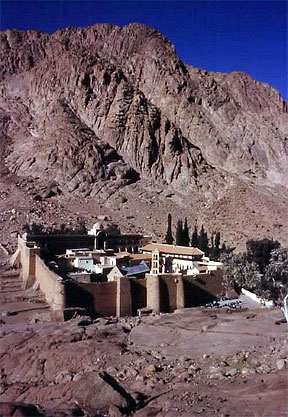 Yet in his instructions to the Israelites concerning altars, the Lord did not have them build a single altar at Sinai, as if this were some uniquely holy place. Rather, he commanded them to build altars “in every place” where he caused his name to be remembered (20:24). And the Lord promised to come and bless the Israelites in those places (20:24).
Yet in his instructions to the Israelites concerning altars, the Lord did not have them build a single altar at Sinai, as if this were some uniquely holy place. Rather, he commanded them to build altars “in every place” where he caused his name to be remembered (20:24). And the Lord promised to come and bless the Israelites in those places (20:24).
So Mt. Sinai was, on the one hand, one of the thinnest of thin places. Yet, on the other hand, it was not hallowed as a place that was somehow essentially thin. After the law was given at this location, we have no indication (to my knowledge) that Mt. Sinai continued to be a place of special prayer and pilgrimage for Jews. In time, of course, Jerusalem played that role. But, given what happened at Mt. Sinai, it is indeed striking that the place itself wasn’t regarded with awe as a unique place where one might encounter God. It wasn’t until several centuries after Christ that some Christians established St. Catherine’s Monastery at Mt. Sinai. (Photo: St. Catherine’s Monastery, with part of Mt. Sinai in the background.)
The sense we get from Exodus, at least to this point in the story, is that there can be thin places, but they don’t have to do with geography so much as God’s choice to make himself known there. After the time of revelation has passed, the former thin place retains none of its miraculous thinness.
Topics: Thin Places |
4 Responses to “Mt. Sinai as a Thin Place”
Comments
Thanks for your willingness to make a comment. Note: I do not moderate comments before they are posted, though they are automatically screened for profanities, spam, etc., and sometimes the screening program holds comments for moderation even though they're not offensive. I encourage open dialogue and serious disagreement, and am always willing to learn from my mistakes. I will not delete comments unless they are extraordinarily rude or irrelevant to the topic at hand. You do need to login in order to make a comment, because this cuts down on spam. You are free to use a nickname if you wish. Finally, I will eventually read all comments, but I don't have the time to respond to them on a consistent basis because I've got a few other demands on my time, like my "day job," my family, sleep, etc.
You must be logged in to post a comment.




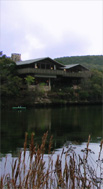
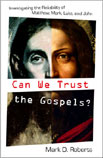



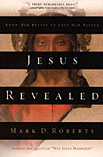
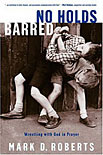
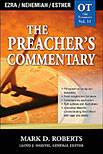
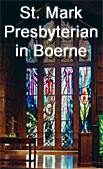

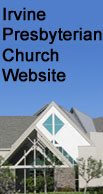
May 13th, 2009 at 4:29 am
I don’t reject the notion of thin places outright, but I lean toward agreement with your last two sentences. God can choose a time and place to reveal himself, but it is the revelation itself that is holy. There is nothing intrinsically “thin” about the time or place of the revelation.
One thing I am wondering about, and I would appreciate hearing comments. Prior to the gift of the Holy Spirit there are numerous instances of “thinness” mentioned in scripture, from the Garden of Eden, throughout the Old Testament, the Christ himself (quintessentially thin), the road to Damascus, etc. How has the presence of the Holy Spirit affected the need (if God can have a need for anything) for the thinness described here as God choosing to penetrate the time/space barrier that permeates creation? Or has thinness become a part of our individual relationship with God through Christ?
May 13th, 2009 at 7:11 am
My experience some years ago as a tourist and then resident (for ten months) in Israel made me skeptical about thin places. Many places that may have had historical associations with God’s revelation have been exploited as tourist sites. I was on a ten day trip in Sinai in an open air truck. Early one morning we climbed to the top of Mt. Sinai to see the sunrise. It was an arduous climb rewarded with a beautiful sunrise, but neither I or my companions any felt closer to God. (Of course one might argue that we were on the wrong mountain since nobody knows for certain the mountain that Moses climbed to receive the Law.) When we descended, we toured St. Catherine’s Monastary. Near the entrance to one chapel was a scrawny tree about 15 feet high. An old sign in back of the tree read, “The burning bush.” This led me to the conclusion that any old bush will do, that God is rather arbitrary about where he decides reveal himself.
I think there has been a tendency throughout history to turn holy places into tourist centers. Perhaps that’s why Jesus overturned the moneychanger’s tables in the Temple. They had turned a house of prayer into a den of thieves.
Christians have long promoted holy places. The term Holy Land itself is one such promotion. It is not a biblical term, but it is almost always used to promote trips to Israel. Jews call their state Israel and the land it occupies they call simply “the earth”.
Emperor Constantine’s mother, Helena, made a pilgrimage to Jerusalem around A.D. 327 and found the probable site of the crucifixion and resurrection. She had a church built over it to commemorate the spot. Since this church, shared with various denominations which do not include Protestants, looks nothing like the site of Golgatha or the tomb from which Jesus was resurrected, a British General named Gordon found a nice site of a tomb nearby and build a garden around it. Many Christian visitors to Jerusalem have a religious experience visiting the “Garden Tomb” which they might call a thin place if they knew that terminology. I have personally witnessed Christian tourists weeping at this lovely site. Nevertheless there is a strong concensus among archeologists that the Church of the Holy Sepulchure is a much more probable site for the crucifixion and resurrection of Jesus than the Garden Tomb.
So I am skeptical about thin places. At best they are temporary and at worst tourist traps.
May 13th, 2009 at 7:34 am
Bill, well said. I think the thinness we experience has more to do with the ebb and flow of our spiritual walk than with any physical reality around us.
May 13th, 2009 at 9:42 am
Your final paragraph is the proverbial head of the nail that has been struck. Great observation. I have my own thoughts on this notion of “thin places” in the church age in which we live, but this comment section is not the time or place to preempt, or second guess where you are going with this series. Instead, encouragement to press on. Looking forward to the next installment.